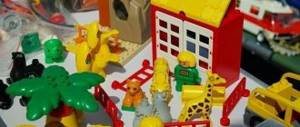Formation of the foundations of a healthy lifestyle in preschool children
April 24, 2020
Cherenkova Ekaterina Gennadievna
Educator
The problem of creating a culture of health is relevant, timely and quite complex. Preschool age is decisive in the formation of the foundation of physical and mental health. It is up to the age of 7 that a person goes through a huge developmental path.
It is during this period that there is intensive development of organs and the formation of functional systems of the body.
The basic personality traits, attitude towards oneself and others are laid down. At this stage, children develop a knowledge base and practical skills for a healthy lifestyle - systematic physical education and sports.
A healthy lifestyle is an active activity of people aimed at improving and maintaining health. The formation of a healthy lifestyle should begin in kindergarten. All life activities of a child in a preschool institution should be aimed at maintaining and strengthening health.
The goal of health work in a preschool institution is to create a sustainable motivation for the need to preserve the health of the child and others.
Key components of a healthy lifestyle
1. A rational regime is a regime of a scientifically based routine of life, a rational distribution of time and sequence of various types of activities and rest.
If the regime is followed correctly, a clear rhythm of the body’s functioning is developed. Creates the best conditions for work and health restoration. The daily routine must be observed from the first days of life.
When carrying out regime processes, the following rules should be adhered to:
- Proper nutrition. Sound sleep is the key to the harmonious development of a child. With maximum adherence to wakefulness and the rhythm of sleep, the most complex work occurs, as a result of which the brain is formed and the body develops.
- Careful hygienic care ensures cleanliness of the body, clothes, and bed.
- Formation of cultural and hygienic skills.
- Emotional communication during routine processes.
If the regime is based on the characteristics of the child’s “biorhythmic portrait,” the better conditions will be for his physiological systems, which will certainly affect his health and mood.
2. Proper nutrition.
In childhood, the role of nutrition is especially great, when a food stereotype is formed and the typological characteristics of an adult are laid. That is why the state of health largely depends on properly organized nutrition in childhood.
Principles of rational nutrition:
- Ensuring balance
- Satisfying the body's nutritional needs is nutritious.
- Compliance with diet.
Rational nutrition of children is one of the main environmental factors that determine the normal development of the child. It affects the child’s life activity, growth, and health, and increases resistance to various adverse influences.
3. Rational motor activity.
A culture of health and a culture of movement are two interconnected components in a child’s life.
Means of motor orientation
- Physical exercise;
- Physical education minutes;
- Emotional releases;
- Gymnastics (health-improving after sleep);
- Finger gymnastics, visual, breathing, corrective;
- Outdoor and sports games help improve the functioning of all organs and the body as a whole.
The motor culture of preschool children begins with the formation of the structure of natural movements and the development of motor abilities.
The conditions for the formation of a motor culture are:
- Educating children to perform motor actions.
- Development of imagination when performing them.
- The use of sensory systems in motor culture.
- Creating optimal conditions for each child.
Nurturing motor culture is a process aimed at organizing the system of upbringing and education in kindergarten and family.
In the process of educating a motor culture, a child acquires knowledge, masters methods of activity and experience in their implementation, and he also develops creative activity, his cognitive abilities, and volitional qualities. Daily exercises, physical education and dancing, outdoor games are mandatory in a preschool institution.
Rational physical activity teaches a preschooler to feel and control his body, activates appetite, improves metabolism and digestive processes, trains will and character, and gives the child a lot of positive emotions.
4. Hardening the body
Hardening not only increases stability, but also the ability to develop compensatory functional capabilities of the body and increase its performance. The process of hardening the body is a repeated or prolonged effect on the body of one or another meteorological factor: cold, heat, atmospheric pressure. As a result of hardening, the activity of its systems and organs improves, resistance to various diseases increases, especially colds, the ability to endure sharp fluctuations in various environmental factors without harm to health is developed, and the body's endurance increases.
5. Maintaining a stable psycho-emotional state.
Experts note that the psychophysical health and emotional well-being of a child largely depends on the environment in which he lives and is raised. Therefore, it is necessary to create conditions that ensure the psychological health of a preschooler, providing a humane attitude towards children and an individual approach taking into account their personal characteristics, psychological comfort, and an interesting and meaningful life in kindergarten.
Relationships in the family are the basis of the child’s psychological state: it depends on them how confident the child is in his abilities, how cheerful and inquisitive he is, how open to communication and ready for true friendship he is.
As for relationships in kindergarten, as a rule, any conflict situation can be resolved. Difficulties in communicating with specific children can be resolved by contacting a psychologist and planning a solution to the problem together with the teacher.
6. Compliance with personal hygiene rules
Hygienic measures should become common and subjectively necessary for a preschooler. Self-care gives a person a feeling of cleanliness and health: every cell of the body begins to live in an optimal mode, without upsetting its owner.
Accustom your child to hygienic individualism: his own comb, his own bed, his own potty, his own handkerchief, his own towel, his own toothbrush.
Objectives of work to create a culture of healthy lifestyle among preschool children
- Form the idea that being healthy is good and being sick is bad; about some signs of health
- Develop healthy behavior skills
- Love to move
- Eat more vegetables and fruits
- Wash your hands after every contamination
- Be friendly
- Spend more time outdoors
- Follow the regime.
- Help to master sustainable behavior skills
- Develop the ability to talk about your health and the health of loved ones
- Develop correct posture skills
- Enrich children's knowledge about physical education movement in general
- Develop artistic interest.
Our main allies in our work to develop healthy lifestyle habits in children are parents.
Thus, from an early age it is necessary to involve the child in family and public education, a healthy lifestyle, and to develop the child’s personal health skills.
A healthy lifestyle is one of the most important factors in maintaining the health and well-being of a child; it determines the quality of life, and preschool age is the most important period when human personality is formed.
Formation of the foundations of a healthy lifestyle in preschool children is one of the most emotional problems of preschool age, because Caring for the health and all-round development of children, we taught them to vaccinate, maintain a cheerful, cheerful mood, and cultivate a caring attitude towards their health from preschool age.
In my work I also use the manual by L. F. Tikhomirova “Health Lessons”, T. A. Sharygina “Conversations about Health”, M. Yu. Kartushina “We Want to Be Healthy”.
Formation of a healthy lifestyle in preschool children, where I taught children to take care of their health, we instill in children the desire to be healthy. In my work with children, I try to develop personal hygiene skills, wash my hands thoroughly before eating, after going to the toilet, after a walk, know and name the body, and instill the habit of rinsing your mouth with drinking water after eating. To learn hygiene skills, she used didactic games and role-playing games, such as “Medicinal Plants”, “Doll Masha Receives Guests”, “Sun, Air and Water are Our Best Friends”, and also introduced personal hygiene items through games. Games help increase a child's awareness of self-care issues. Also, while washing, I used artistic expression and memorized nursery rhymes “Water - water”, “Grow your braid to the waist”.
A healthy lifestyle creates in children the motivation and desire to be healthy, to value a good mood, well-being, and to be able to protect themselves and their peers from the harmful influences of the environment and unwanted contacts.
We want our children to grow up healthy, strong, and dexterous.
Share with friends
Mnemonics: how to use mnemonic techniques in working with children of senior preschool age and in extracurricular activities with primary school students Solving word problems in a mathematics lesson as a means of developing communicative and speech skills in primary school children
You do not have sufficient rights to add comments
You must be logged in to post comments. If you do not yet have an account on our website, we invite you to register. It will take no more than 5 minutes.
“Healthy lifestyle of a preschooler”
Consultation for parents
“Healthy lifestyle of a preschooler”
What is healthy lifestyle?
“Taking care of health is the most important job of a teacher. Their spiritual life, worldview, mental development, strength of knowledge, and self-confidence depend on the cheerfulness and vigor of children.”
V.A. Sukhomlinsky.
The task of early formation of a culture of health is relevant, timely and quite complex. How to strengthen and maintain the health of our children? How to promote the formation of a child’s physical culture? How to instill healthy lifestyle skills? When should this start? Preschool age is decisive in the formation of the foundation of physical and mental health. After all, it is up to the age of seven that intensive development of organs and the formation of functional systems of the body occurs, the main personality traits are laid, and character is formed. It is important at this stage to form in children a base of knowledge and practical skills of a healthy lifestyle, a conscious need for systematic physical education and sports.
The study of children's health problems is of particular relevance in our time.
The art of living long consists, first of all, in learning to take care of your health from childhood. What is missed in childhood is difficult to make up for. Therefore, the priority direction in preschool education today is to increase the level of health of children, develop their healthy lifestyle skills (HLS), as well as a sustainable need for regular physical exercise.
Health is not only the absence of disease, it is a state of optimal performance, creative output, emotional tone, that which creates the foundation for the future well-being of an individual.
The main components of a healthy lifestyle.
Rational mode.
Proper nutrition.
Rational motor activity.
Hardening the body.
With proper and strict adherence to the daily routine, a clear rhythm of the body’s functioning is developed. And this, in turn, creates the best conditions for work and recovery, thereby promoting health. The daily routine must be observed from the first days of life. Health and proper development depend on this.
When carrying out regime processes, the following rules should be adhered to:
Complete and timely satisfaction of all organic needs of children (sleep, nutrition).
Careful hygienic care, ensuring cleanliness of the body, clothes, bed.
Involving children to participate as much as possible in regime processes.
Formation of cultural and hygienic skills.
Emotional communication during routine processes.
Taking into account the needs of children and the individual characteristics of each child.
The state of health largely depends on properly organized nutrition in childhood.
Basic principles of rational nutrition:
Ensuring balance
Meeting the body's needs for essential nutrients, vitamins and minerals.
Compliance with diet.
A culture of health and a culture of movement are two interconnected components in a child’s life. Active physical activity, in addition to its positive impact on health and physical development, provides psycho-emotional comfort for the child.
The motor culture of preschool children begins with the formation of the structure of natural movements and the development of motor abilities, creating conditions for children to creatively master the standards of movement in various situations, the formation of motor imagination, and the ability to emotionally experience movements.
Nurturing a motor culture is a mutually directed process; for its success, it is necessary to organize a purposeful system of upbringing and education in kindergarten and family.
In the process of educating a motor culture, a child acquires the knowledge necessary for conscious motor activity, masters methods of activity and experience in their implementation, and the child’s creative activity, his cognitive abilities, volitional qualities, and emotional sphere develop.
Hardening helps solve a whole range of health problems. It not only increases stability, but also the ability to develop compensatory functional capabilities of the body and increase its performance.
The systematic preservation and development of health must also be carried out in the treatment and prophylactic direction (disease prevention, national calendar of preventive vaccinations, fortification, etc.)
Useful tips for parents
• Teach children to wash their hands before eating, after getting dirty, keep their face clean, teach them to brush their teeth, and keep their nose in order.
• Learn to use an individual towel, handkerchief, toothbrush, comb, and maintain neatness in clothing and shoes.
• Teach carefully, chew food, do not talk while eating, use a napkin, maintain correct posture at the table.
• Teach children to seek help from an adult when pain occurs.
• Explain to children the importance of sleep, nutrition, hygiene procedures, movements, and hardening for health.
• Teach children to turn away when sneezing or coughing, and to use a napkin or handkerchief when doing so.
• To maintain mental health, it is necessary to take care of the prevention of neuroses in children. Important factors in the prevention of neurosis are a healthy psychological climate in the family and in preschool educational institutions, a favorable psychological atmosphere in interpersonal relationships and adherence to a properly organized hygienic regime (sleep hygiene, morning exercises, morning water treatment, regular meals, daily walks).
• One of the main conditions is a normal night's sleep. To organize it, you must adhere to the following rules:
• The child must be taught to go to bed at the same time.
• An hour and a half before going to bed, you should reduce the flow of impressions (TV, radio, etc.)
• 30-40 minutes before bedtime, you can take a quiet walk.
• Before going to bed, it is recommended to take warm baths lasting 8-10 minutes.
• The room in which the child sleeps must be well ventilated.
Parents should not forget that they are role models in all periods of life for their child, and how the mother or father behaves in a given situation determines the child’s behavior and life principles.
What to feed the child?
Yes, our child has been sitting at the common table for a long time, eating and drinking on his own. What does he eat? The same as adults? Are you sure this is correct? The nutrition of preschool children should take into account the characteristics of their digestive system; it has not yet become stronger and formed. The diet of a 5-year-old child should consist of easily digestible components.
The basic principles are as follows:
-energy value must correspond to age; breakfast should make up 25% of the daily energy value, lunch – up to 40%, afternoon snack – 10%, and dinner 25%;
- the preschooler’s diet is organized either by parents or a preschool institution in compliance with sanitary standards; Meal hours should be strictly constant, at least 4 times a day.
-all nutritional factors must be balanced; The menu is expanding a bit.
• Spicy seasonings and mushrooms are also prohibited. You can make dishes a little spicier by using onions, garlic and a very small amount of pepper in various sauces for meat or fish.
• For cereals, give preference to pearl barley and millet – they contain fiber.
• What is in the diet of a preschooler: warm and hot food, at least ¾ of the total daily ration. And, of course, the base is meat, fish, dairy products, pasta, cereals, bread, vegetables and fruits.
• Protein. The body grows, and only protein is the building material. The source of easily digestible protein is meat, preferably veal, chicken and turkey. It is preferable to take low-fat fish: cod, pike perch, hake, pollock, pink salmon.
• Do not treat your child to delicacies - caviar, smoked meats. You can get irritation of the delicate mucous membrane of the stomach, but there is 0% benefit.
• You can also fry when preparing food for your baby, but do not fry too much. It’s still better to steam cutlets and meatballs or in sauce.
• Don't forget that your child's diet should consist of dairy products every day. These can be fermented milk products - kefir, yogurt, fermented baked milk, cottage cheese with no more than 5% fat content, milk. Add dairy products to desserts, casseroles, cereals, and sandwiches.
• We feed the child vegetables, fruits and juices every day. A preschooler should receive 250 g of vegetables per day, up to 200 g of potatoes, fruits and berries in season up to 250 g. Your child can only get vitamins from fresh vegetables and fruits. What vegetables? Let it be cabbage, cucumbers, tomatoes, radishes, lettuce, dill and parsley. Give juices and nectars every day too. If you are not taught to give fresh juice, buy juices intended for baby food.
• Choose the right bread, from whole grains, rye, and pasta made from durum wheat flour.
• Butter no more than 20 g per day and vegetable oil (10 g), of course, we use, preferably in ready-made dishes. Do not give fatty foods to your child in the evening. By nightfall, the activity of the child’s stomach is greatly reduced, and if the food does not have time to be digested before bedtime, you will not only have problems with digestion, but also with sound sleep!
What else should a parent know?
1.If you feed your child at home after kindergarten, take a look at the daily menu before leaving. Do not prepare foods or dishes that he has already eaten.
2. The main products for daily nutrition have been listed, but such as hard cheese, sour cream, eggs, fish are not for daily consumption, once every 2 days.
3. Prepare safe food, for example, minced meat, not a whole piece, so that the child does not choke.
4.The same applies to fish: remove everything down to the bone, or make minced meat..
5. It happens that a child refuses to eat this or that food. Don't persuade, don't force. Ask why he doesn’t want to, try it yourself. You don't eat everything either. Change the recipe. Or add the same product to another dish.
6. A child can drink clean drinking water as much as he wants, but sugary drinks need to be controlled and limited, and this is especially true for store-bought drinks.
At this age, the sugar norm is 50 g per day. In sweet sparkling water this is 7 times higher! Think twice before buying such a drink.
7. The total calorie content of food is approximately 1800 kcal, and in terms of weight, a child should eat about 1.5 kg of food per day.
Yes, it is troublesome to prepare separate healthy meals for preschoolers, but you can also prepare proper healthy food for yourself, an adult, without spicy, fatty, or sweet foods. And preference is for vegetables and fruits. This will also be an excellent example for the child and a guarantee of family health!
Tasty and healthy! About the benefits of oxygen cocktails!
An oxygen cocktail is a juice, herbal solution or any other drink saturated with oxygen to the point of soft airy foam.
Oxygen cocktail is a very useful product. Its use compensates for the lack of Oxygen or, in medical terms, eliminates hypoxia. In terms of its effect on the body, a small portion of a cocktail is equivalent to a full-fledged walk in the forest.
An oxygen cocktail activates the motor, enzymatic and secretory functions of the gastrointestinal tract, normalizes the intestinal microflora, which means it improves the digestive process and accelerates the breakdown of nutrients. These properties of the cocktail help cure diseases of the stomach and intestines, including such as chronic gastritis with increased, normal and decreased secretory function, peptic ulcer of the stomach and duodenum, chronic colitis, and dysbacteriosis. Today, oxygen cocktails are an inexpensive, effective means of restoring health, an ideal cure for many diseases, and the best health product. Today, the oxygen cocktail is successfully used: in sanatoriums, rest homes, health and fitness centers; hospitals, pharmacies, beauty institutes; phyto and oxygen bars; special attention is paid to oxygen cocktails in kindergartens and schools!
Drink the cocktail to improve overall metabolic processes in the body. The cocktail helps to concentrate and improves memory, strengthens the immune system, normalizes sleep, and improves vision.
The result of using oxygen cocktails is truly unique! Consuming 1000 g of an oxygen cocktail is equivalent to an hour-long walk in a coniferous forest.
The use of oxygen cocktails for health purposes promotes:
• Increasing the body's resistance to viral and infectious diseases
• Activation of the immune system
• Increasing performance, increasing physical and mental capabilities of a person
• Activation of brain function, relieving fatigue and general fatigue. The cocktail has virtually no contraindications. The best
The time for taking an oxygen cocktail is 10-15 minutes before the next meal.



